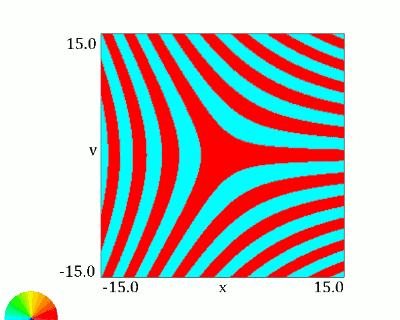
A classic online mathematical reference offered by the National Institute of Standards and Technology (NIST) now features a better way for users to view its most complicated illustrations—three-dimensional graphs of math functions that are so complex they call mountain ranges to mind.
The Digital Library of Mathematical Functions (DLMF), which was released online in 2010, contains hundreds of function graphs, nearly 200 of which are available as interactive 3-D visualizations of complex functions. Like mountain ranges, these visualizations can be hard to appreciate fully from a single vantage point; it helps to look at one from lots of angles to see how all its peaks and valleys fit together. And the DLMF allows readers to do so, by rotating them and zooming in.
But up to now, it required a special browser plugin to manipulate them. No more. A NIST team has converted these complex functions to an alternative format called WebGL, a JavaScript utility which allows a user to view a 3D graphics scene directly in any compliant web browser without using a plugin. The two-year effort also improved the overall quality of the visualizations. New features include a "bottom" viewpoint, and technical improvements to an innovative DLMF feature that allows users to slice through the 3D graph with a plane in order to visualize the contour of the plane's intersection with the graph.
"Today most major browsers are WebGL enabled on Windows, Mac and Linux platforms," says Bonita Saunders, the DLMF's Visualization Editor. "However, we will continue to offer options for viewing the DLMF visualizations using plugins until we are more confident about WebGL support across most browsers and platforms."
Saunders says the team continues to consider new ways to enhance the DLMF experience based on user feedback and that in the future they hope to add additional features—such as the ability to make a visualization spin continuously.

